Large Format Progress: Precision Sound Studios Upgrades the Upper West Side
Sometimes all there is to rebrand is just a name change – some new words, and nothing bigger.
That’s not the case with Precision Sound Studios, the Upper West Side audio facility that once simply went by the name of its founder, Alex Sterling. But this busy room just keeps raising its game, and with the productive addition of a 48-channel SSL Duality console also came an advanced business plan – developments which allowed Sterling to finally move beyond a self-titled studio.
“Now the space has an identity that extends beyond just me,” Sterling says of his multi-faceted and very high-fidelity facility. “I felt that was an important chapter for my business, to partially disengage from the previous brand. I don’t want people to come to the studio just for me anymore.”
But letting go of the original moniker doesn’t mean that Sterling is sacrificing his core principles. Actually, his philosophy of melding sophisticated audio engineering with first-class customer service – all guided by business acumen – is stronger than ever, an outgrowth of the serious approach he’s taken to recording, mixing, mastering and post since he launched his career as a bedroom producer over a decade ago.
Upper West Side Story
The story of Precision’s expansion starts with its location. Situated on the vastly underserved Upper West Side, the studio has built up a discerning clientele since Sterling first arrived there in 2005. It’s a dedicated customer base that includes artists such as David Chesky, Cyrus Chestnut, Michael Feinstein, Roy Hargrove, Frankie Knuckles, The National, The Philharmonic Orchestra of the Americas, and Widowspeak, along with Virgin Records, Sony Music, Manhattan Production Music, and many more.
They’ve long been drawn to Sterling’s unique live room, a balanced and open space distinctively lined with bookshelves and 3,000-plus books, also containing a 1929 Steinway M grand piano. Mics include AEA R88 stereo ribbon, Bock 251, Placid Audio Copperphone, and a Telefunken ELAM 260 stereo set. In the control room, the SSL Duality is joined by Neve, API and Manley preamps; ATC, Ocean Way and ADAM monitoring; and choice outboard including dual Bricasti M7 reverbs, Eventide Eclipse, Demeter RV-1 Spring Reverb, Strymon BigSky, Timeline, and DIG, and a Moog Clusterflux.
Running the show is Sterling, who studied under Tom Elmhirst, Joe Chiccarelli, Jimmy Douglass, Manny Marroquin and Greg Wells while developing his business. But that’s just on the audio side of his head – business-wise Sterling is setting his own smart course, understanding exactly how to run lean and mean, and when it’s time to go big or go home.
Drivers Wanted
Sterling’s biz plan wasn’t simply to add an SSL and watch the phone light up. Instead, it comes part and parcel with building on his client-first philosophy, as well as expanding on the human resources available from Precision Sound Studios to service their customers.
“I’m interested in developing a personal relationship with clients over time,” Sterling says. “What I offer is a space that’s very well-equipped and capable, but also more intimate: That’s a common thread throughout my years of being in the industry.
“One of the things I’ve been hoping to do is continue providing customer-oriented audio services, while doing work of my own. But I’m also interested in expanding my business to include other engineers, assistants, and expanding the circle. So since the console has gone in, I’m not just trying to expand my own labor, I’m also building a culture around my studio that’s bigger than just myself.”
Sterling is carefully cultivating contacts with audio pros, inviting the best of them into his inner circle so they can run Precision sessions. “The very first thing has been trying to develop closer relationships with other engineers and producers,” he explains. “Of course, I have my own client base, which are musicians, songwriters, and producers themselves who are generally not engineers. In order to have people that I can delegate projects to, I’m identifying qualified people who I can trust doing my own client work, and also run sessions on their own.
“Many other businesses have done this many times – building a staff – but since my space is not large enough to have a revolving door of many people, I’m trying to be selective in building a core team of extremely qualified engineers.”
Since chosen pros will be representing his brand with every fader move they make, Sterling knows he must select wisely – that’s where his instincts come in. “Someone once said something very wise to me: ‘Almost all opportunities come through other people.’ So I look to the character of the personal relationship. If you like their style of being a person, if you have shared values, if you have a good relationship with them, that says a lot. Things don’t all matter the same to everybody, and that’s fine, but in the case of a studio like mine, where I’ve created a very high-end facility that I do business in, my priority is keeping it clean, orderly, and working with people who are serious is a must.
“Coming up in the field, one thing I detected was a lot of negativity in the industry, because it’s a very hard industry to survive in. In 2008, there was a big studio business collapse, so one thing I don’t want is the nasty, salty, hard-to-deal-with staff experience. It’s warm and friendly here – that’s the aesthetic of the way I like to run my business.”
Sterling understands that selectivity is a two-way street, and that hiring staff is only half the battle. From there, it’s up to him to retain valuable talent. “I’ve always believed you have to treat people with respect and kindness, that’s the way to engender goodwill,” he states. “So as an employer and the father of this facility, so to speak, I believe the best way to get people to work with you, is to treat them well, fairly, and create a positive culture around the facility itself.”
Choosing a Console
Many engineers will be tantalized by the chance to record and mix on the SSL Duality. The board represents SSL’s hybrid approach of combining a traditional analog path and signal processing with DAW control and integration, on one hardware surface. Precision Sound’s model includes Delta automation, plus full SSL EQ, dynamics, and filters on each channel.
Besides its obvious appeal to clients, this board is an engineer magnet. “Up until I installed the console, the facility was essentially a DAW workstation with some outboard gear,” says Sterling. “I was working in a hybrid environment where I had a very capable front end, and mixing with the hybrid analog/digital method. With the console, the space is suddenly good for large tracking – it’s easier to record ensembles and orchestral sessions. So now that the workflow is enhanced for large ensemble recording, there’s more need for staff on-site: You need additional engineers, a tape op, etc.
“The console is part of my passion for doing larger projects more efficiently. When you have a console, it’s much easier to do bigger tracking projects. That’s one way the console has influenced the growth: You can do more complex projects more easily.”
As a result, Sterling bets that Precision Sound Studios is that much more attractive to producers. “We’re offering something less common in today’s studios: the full large console experience,” he states. “It’s one of six SSL Duality consoles in NYC, such as the ones at Germano Studios and NYU. For people who are looking for a Duality – like an engineer in need of a high-end console to do a mix – my facility is now on the map.”
With several large format consoles for Sterling to choose from, there were specific reasons why the Duality emerged as the winner. “For the last several years, as my business has grown and acquiring a console has become more achievable as an objective, I did research into the field of modern consoles,” Sterling notes. “I was firm in my mind that I didn’t want to purchase a vintage console. It would have cost less up front, and there’s tons of vintage consoles with a great sound and pedigree, but you have to be very careful when buying a vintage console. You can get into a huge maintenance hassle. An old Neve could have been great, but I threw out the idea of bringing in a vintage console – I just couldn’t get my head around paying thousands of dollars for electricity and maintenance.
“There are only a few companies making modern consoles today: SSL, AMS Neve, Rupert Neve Designs, API, and Harrison,” continues Sterling. “I demoed the API 1608 and the Rupert Neve Designs 5088, both of which sounded great. — I have Rupert Neve Designs Modules and experience on a Neve 88R. I had worked on older SSL’s as well, with a little bit of experience on the 4000. I chose the Duality because SSL is the only company in today’s market that’s trying to push the envelope in terms of technology. They’re the only ones thinking about, ‘What does a modern producer require in terms of DAW automation?’”
According to Sterling, the “nail in the coffin” was bussing capabilities. “None of the other consoles except the AMS Neve 88RS had more than eight busses,” he says. “The SSL has 24 track busses and three stereo mix busses, so you can use those very creatively to do parallel compression, various ambience FX tricks, and much more. Although those other consoles also sound fantastic, they didn’t give me the comprehensive mixing flexibility that the SSL does. And the SSL has the most advanced and easy to use recall capability. I can recall a 48-channel mix on my console in 15 minutes or less. That’s huge.”
After Effects
Studios are a system, and so the installation of the SSL Duality was just one step in a larger makeover for the control room. “Going from a hybrid design with all my outboard in front of me to a console required a major change – I had to design racks that would fit along the side and back wall to accommodate all of my outboard gear,” says Sterling. “But the big thing people don’t think about is the wiring: The wiring job of the patch bays, and designing the wiring system itself was more work than buying the console itself.
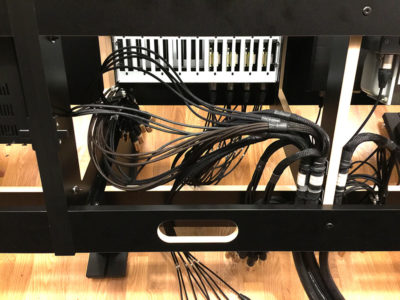
Wiring was no afterthought: Sommer MC-Mistral analog/digital combo cable had a positive impact on the console installation.
“For that I was very fortunate to be introduced to the Malvicino Design Group via (SSL SVP) Don Wershba. Horacio Malvicino worked on all the patch bay’s wiring, and made everything to my studio’s specifications. I also had to work with my carpenter to create some cable chases to accommodate all the new lines. I’m very detail-oriented, so I pushed Malvicino to do things very precisely. He really demonstrated his own skills and desire to do a great job – he and his team flawlessly executed everything, from fabricating the patchbays, cable assemblies, and mic panels, to onsite rack looming and installation.”
Armed with a degree in Electrical Engineering, the NYC-based Malvicino absorbed himself in the Precision Sound Studios build. Sommer MC-Mistral analog/digital combo cable was used extensively throughout, selected for its accurate capacitance, which assures high transmission quality over long distances. This installation is a first of its kind as most studios are not usually wired with AES/EBU spec cable throughout.
While Sterling was at it, he also installed additional video capabilities for post work. “I’ve been working on an animated movie that I’m wrapping up now which makes use of the large control room TV, and I also have video tie lines to the live room,” he says. “One thing I’ve done a fair amount of is tracking for film and TV scores. For example, I have a client, Michael Bacon, who I’ve worked with for several years. One thing he’ll do is conduct an ensemble to picture – whatever the cue is, I will put it up on the TV in the live room where he can follow along while conducting. Now we have that capability hardwired.
“The live room is 16’ x 25’, which can accommodate 14 or 15 string players. It’s pretty substantial. You would think you couldn’t fit that many people in there, but you can.”
Monitoring the Monitors
Sterling was mindful of the impact that swapping a small DAW station for a large frame console could have on his critical listening. But the revelations when he started breaking in the updated sweet spot were mostly of the positive kind.
“Consoles are famous for being bad for acoustics,” Sterling observes, “and mastering engineers rail against having anything between you and the speakers – and they’re right: Anything between you and the speakers will have an effect. In my old setup, although I had a mastering-style console in front of me, I had a good amount of unobstructed soundstage. I was concerned when I put the console in that I was going to be surprised and have to learn a whole new monitoring layout.
“But what was interesting to me was that all of the volume of the console itself is on legs, and there’s a substantial amount of empty space below it. At least in my room, it’s a great space for bass to pass through, so I noticed that my low frequency behavior improved – in my old space, there wasn’t the same openness. So with the addition of the SSL, I felt like the room’s monitoring became more solid and fuller, and that was really desirable.”
Console reflections were also more easily managed than he anticipated. “What I do that’s a little bit different is I have my speakers behind my console, instead of on my meter bridge,” says Sterling. “You do that to substantially reduce the amount of console surface reflections. My mains are behind the meter bridge by about three feet, so the drivers of my mains don’t even see the surface of the console. As a result, there’s not as much comb filtering from the console surface and the mains as you would get from speakers in the nearfield right above the meterbridge. So the acoustics have improved overall, but in a way that wasn’t really expected.
“I still feel very strongly that my space has excellent critical listening capabilities. I don’t hesitate to do mastering work, even with this giant console in front of me — you start to internalize in a semi-conscious way the acoustics of the space. Now after a year of the new setup, I’m feeling very comfortable with it.”
Future plans for the control room start with 5.1, and go on from there. “One thing I may do is install a surround system in the space, since the console is surround-capable. And also regarding further expansion, I’m in the process of designing a second ‘B’ studio that’s adjacent. It will be a smaller studio with an iso booth for vocals and overdubs — the purpose of that downstream is to create an opportunity for people to access the services of the studio but at a slightly lower price point. That will help bring people in without them having to pay for the larger space if they don’t need it, and then if they want to record some drums they can go into the ‘A’ room and do some tracking.” Likewise clients of the ‘A’ room can go to the ‘B’ room for overdubs and editing as needed.
Up to the Task
Now, lest you drink all the Kool-Aid that Alex Sterling has got it all under control, he’ll be the first to tell you that he doesn’t – especially in the ultra-competitive NYC audio landscape. “It’s a very challenging environment,” he acknowledges. “Every day is a negotiation, so to speak, with your clients. Every day you have to continually prove and justify your worth. One thing I’m very fortunate to have benefited from is that I didn’t get started before the crash. I’ve been a professional for the last 10 years or so, on the heels of the first major industry contraction in the city.
“This is the environment I’ve known, so the benefit is that I didn’t have a huge commercial lease in 2005. I was starting small as a bedroom producer 10 years ago. I didn’t have a lot weighing me down when the contraction happened, and I was able to grow my business in this challenging market. I’ve been doing it the modern way, you could say.”
The SSL Duality, not to mention the room redesign and all that cable, form a hefty investment, but one that Sterling can see has already been worth the risk. “Installing the console has definitely had an impact on my bottom line,” says Sterling. “It’s not an inexpensive proposition, it requires payments to keep owning it. You don’t pick it up on a whim. It’s increased my overhead costs, however it has led to a 40% increase in my revenue in the last eight months. Part of that stems from a rate increase, and part of it is the increased interest in the studio.
“When you have a console of this kind, you can’t go cheap. It can be painful because some of my existing clients have had trouble adjusting to new rates for my services, and I just had to transition some clients over to higher rates for business reasons. But when you raise your rates, you transform the segment of the market you’re working with, because people take it more seriously. And you’re working a bit less – if you’re working for $20 an hour that means you need to be working 25 hours a day to make enough money!”
Like a lively Halloween night, expanding and rebranding Precision Sound Studios has been equal parts exhilaration and terror. “Adding the Duality has been good for my business, but it’s also been scary,” Sterling concedes. “In this climate, you’re going against the trend buying a console, and finance people say to never trade against the trend. The trend is obviously no budget, in the box, instant recalls.
“But that doesn’t actually work with what I want to do as a service provider and as an artist. People come to me looking for someone who will try to help them make their art better, not just get them in and get them out. I think that it is important in today’s industry to give people the experience of a well-equipped, large-format console studio. People are responding to that: When you can sit next to someone and push faders together, it becomes a collaborative process, and that increases the perceived value of the service as well. Artists are more engaged in the process and that helps give them results that they appreciate more easily.”
If Alex Sterling can keep on succeeding, the winners should emerge beyond Precision Sound Studios’ proprietor, his staff, his clients and their satisfied listeners: He’s got his eyes open for everyone brave enough to call audio their occupation.
“I’m very focused on bringing back self-respect to the trade,” he says. “I think a lot of people feel they have to compete on rates, and that’s the only way they can get by. But that’s counterproductive: Then it’s just a race to the bottom and no one can survive. Instead audio pros should ask, ‘What can I provide that’s more valuable than the competition, that’s more comfortable, friendly, warm and honest?’ People find that refreshing.”
- David Weiss
Please note: When you buy products through links on this page, we may earn an affiliate commission.







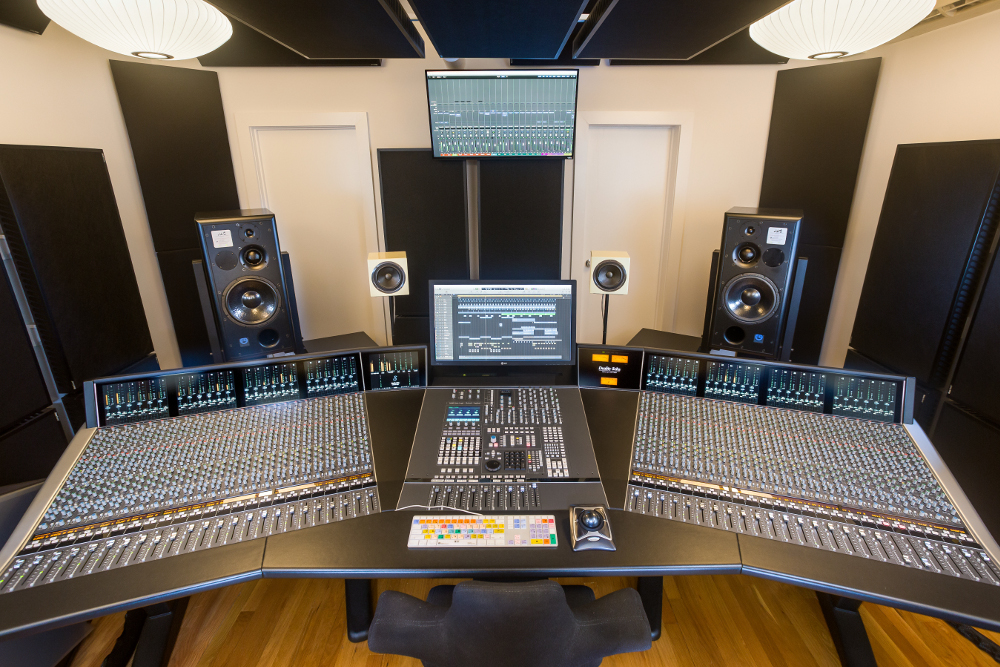
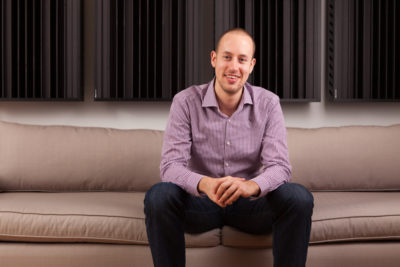
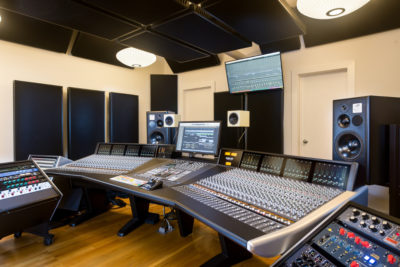
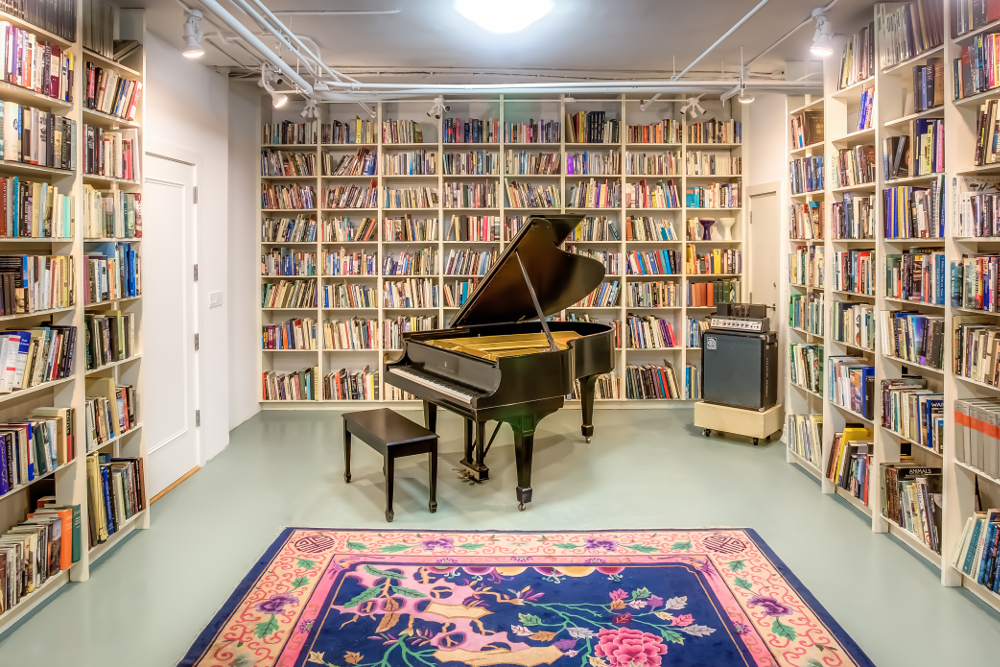
Zal Schreiber
October 10, 2016 at 10:46 am (8 years ago)Beautiful…beautiful!
Even breathtaking.
It’s just the place I’d want to record in….
PS. Quality gear and a quality, caring engineer.
A great mix!